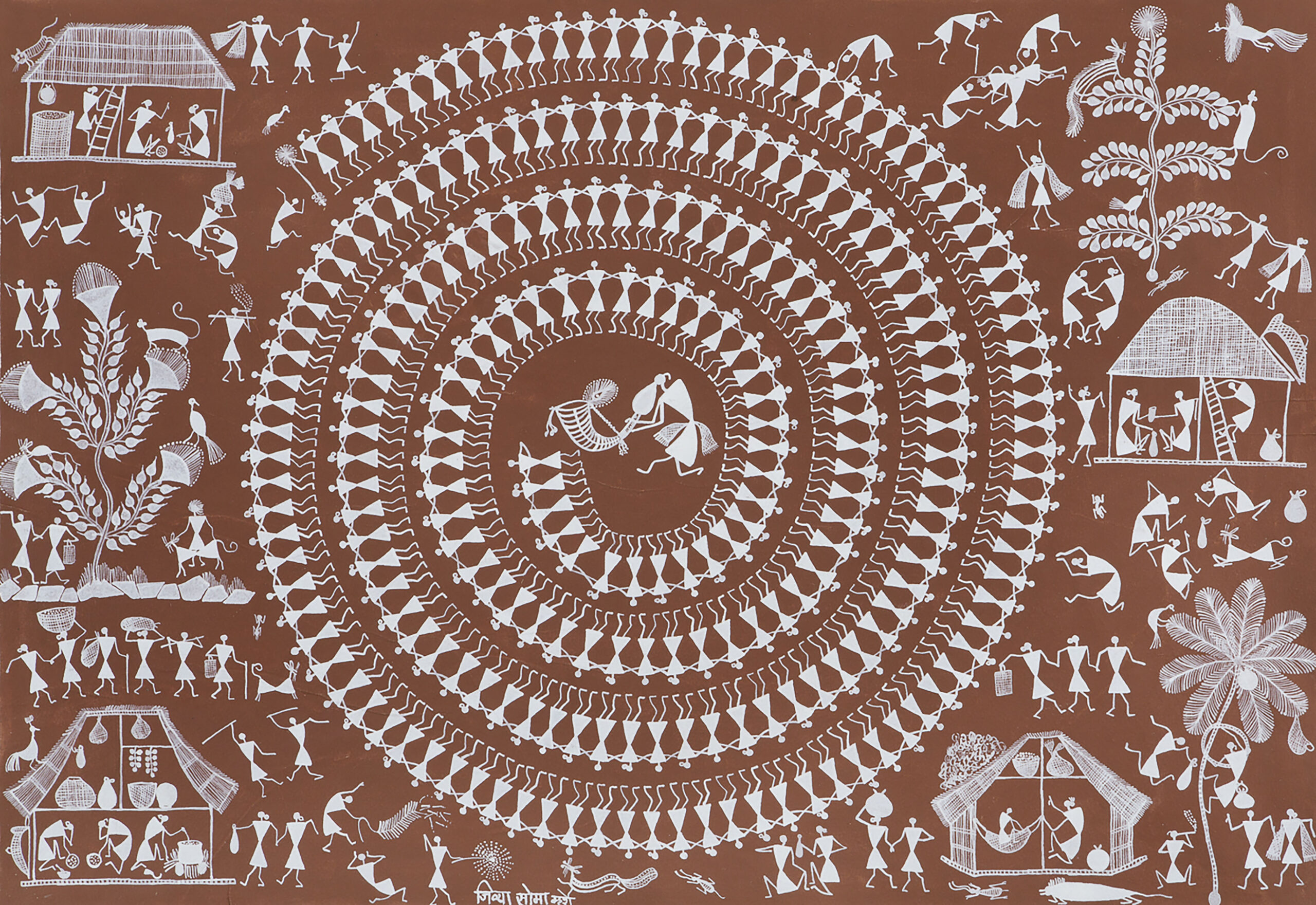Warli Painting
About
- Warli painting is a form of tribal mural art created by the tribal people from the North Sahyadri Range in Maharashtra.
- It is based on the concept of Mother Nature and the elements of nature are often kept in focus.
- Warli artists are known to use their clay huts as backdrops for creating these warli paintings, similar to the way prehistoric paintings were made.
- These rudimentary paintings are made using a set of geometric shapes – a circle, a triangle, and a square.
- People and animals represented in Warli paintings are depicted by two inverse triangles joined at their tips.

- In Warli paintings, male gods are uncommon to find and are usually related to spirits which have taken human form.
- The central motif in every ritual painting is a square known as the “chauk” or “chaukat”. It is depicted by scenes that portray hunting, fishing and farming. Festivals and folk dances are also common scenes depicted through Warli art.
- Apart from ritualistic paintings, Warli paintings also represent various day-to-day activities performed by village members.
- Jivya Soman Mashe is known as the Father of Warli art because he pulled it out of the traditional domain and popularised it beyond the Sahayadri mountains.
Subscribe
Login
0 Comments
